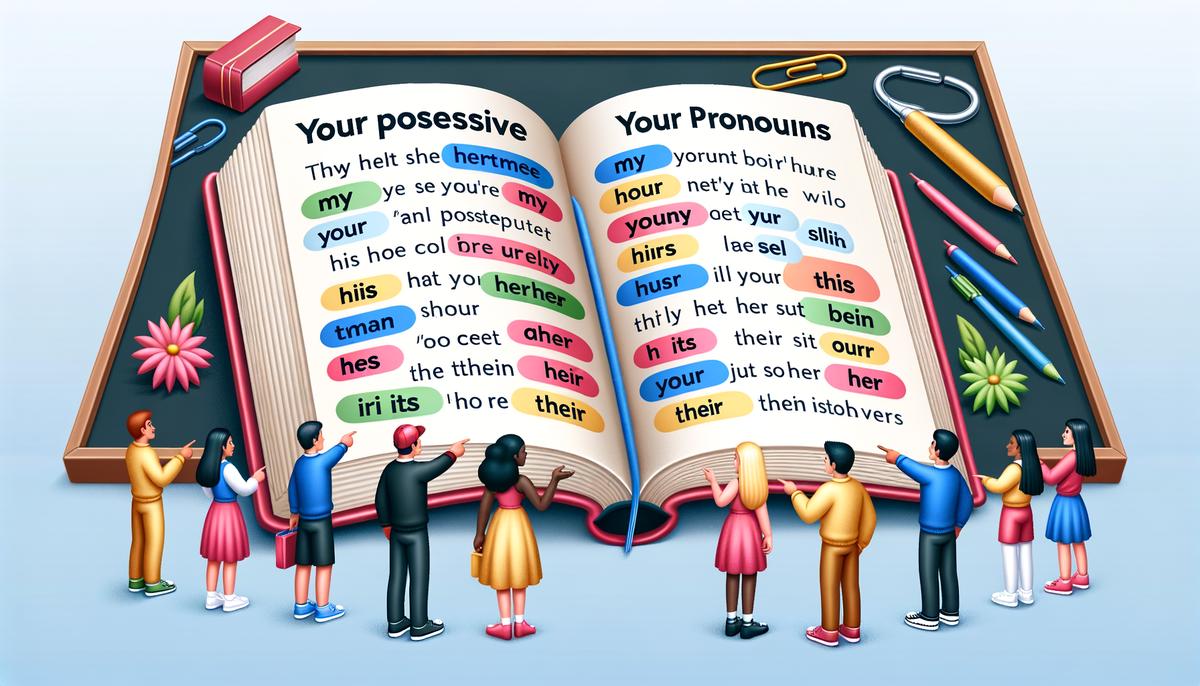Grasping the nuances of the English language can often feel like trying to solve a puzzle, especially when it comes to seemingly simple elements that carry significant meaning. One of the classic mix-ups that bewilders many is the tiny trio of letters in ‘its’ and ‘it’s.’ Although they might appear almost identical at first glance and sound the same when spoken, these two have roles as distinct as day and night in the realm of grammar. By shedding light on the possessive pronoun ‘its’ and the contraction ‘it’s,’ we embark on a linguistic journey designed to clarify and simplify. With a keen eye on context, let’s navigate the specifics of when and how to use each form effectively, turning what once was a source of confusion into a showcase of grammatical precision.
Understanding ‘Its’ and When to Use It
When understanding what signals ownership in the English language without resorting to an apostrophe, it’s pivotal to delineate the usage of possessive pronouns. These words include his, hers, its, ours, theirs, and yours. Unlike the possessive forms of nouns which often require an apostrophe (like “Jessica’s book” or “the cat’s whiskers”), possessive pronouns encapsulate the concept of ownership intrinsically, without the need for punctuational modification. This innate ability to denote possession makes them exceptionally valuable in crafting clear, concise communication that remains uncluttered by excessive punctuation.
The construction of sentences with possessive pronouns offers simplicity and directness in conveying who owns what. For instance, saying “This is her book” immediately and effortlessly informs the reader that the book belongs to her, omitting the redundancy of stating “This is the book of hers.” Similarly, the sentence “They placed their trust in his guidance” subtly but effectively highlights the sentiment of trust owned or possessed by “they” towards “his” guidance. This both simplifies the conveyance of ownership and enhances linguistic efficiency. Through these mechanisms, English enables speakers and writers to express complex relationships of belonging and ownership, demonstrating the language’s capacity to evolve and adapt to its users’ needs for clarity and precision.

Deciphering ‘It’s’ and Its Proper Usage
Understanding when an apostrophe is used for contraction rather than possession can clarify many common grammatical errors. A contraction represents the fusion of two words, wherein an apostrophe is placed where letters have been omitted to form a more compact expression. For example, “can’t” stands for “cannot,” and “you’re” represents “you are.” This grammatical device is standard in informal writing and speech, simplifying the way words and ideas are conveyed. When faced with a contraction, the presence of an apostrophe signals the combination of words, making the sentence not only more concise but also maintaining its informal tone.
Contrastingly, the role of apostrophes in indicating possession is a separate concept. Although it might seem puzzling at first, recognizing the context in which an apostrophe is used helps determine its function. It boils down to the intention behind the sentence. If the goal is to show ownership, such as “Jessica’s notebook,” the apostrophe is used possessively. However, when the aim is to abbreviate or combine words, such as in “it’s,” meaning “it is” or “it has,” the apostrophe’s role is entirely about contraction. Distinguishing between these uses enhances writing clarity and ensures the reader accurately understands the intended meaning without confusion. Remember, while the physical appearance of an apostrophe might be consistent, its role can vary dramatically based on context.
Mastering the difference between ‘its’ and ‘it’s’ illuminates a path to clearer and more accurate communication. By understanding the unique roles these two occupy within the tapestry of English grammar, you empower yourself to convey your thoughts with the precision they deserve. Whether it’s the possessive embrace of ‘its’ signaling ownership or the contracted convenience of ‘it’s’ pulling together ‘it is’ or ‘it has,’ each serves a purpose that enhances our ability to share ideas. Remember, language is not just a tool for communication but also a craft to be honed. As you continue to write and speak, cherish these distinctions as part of your linguistic toolkit, embracing the clarity they bring to your expressions.
Get amazing AI-written content for your website with Writio. This article was crafted by Writio.
Leave a Reply